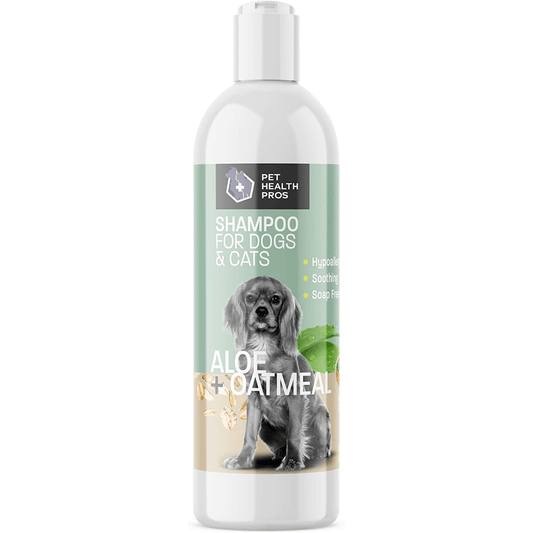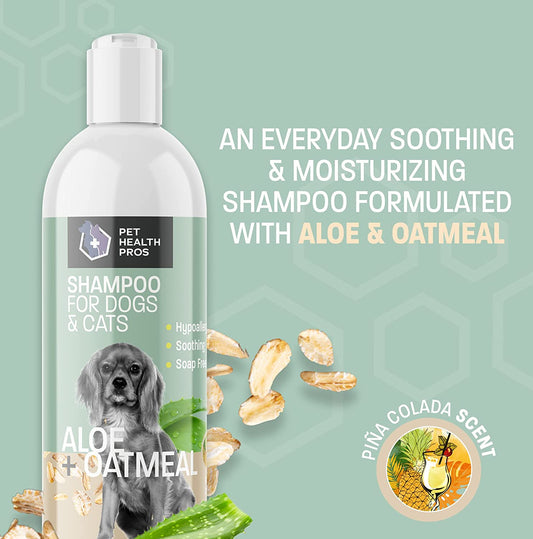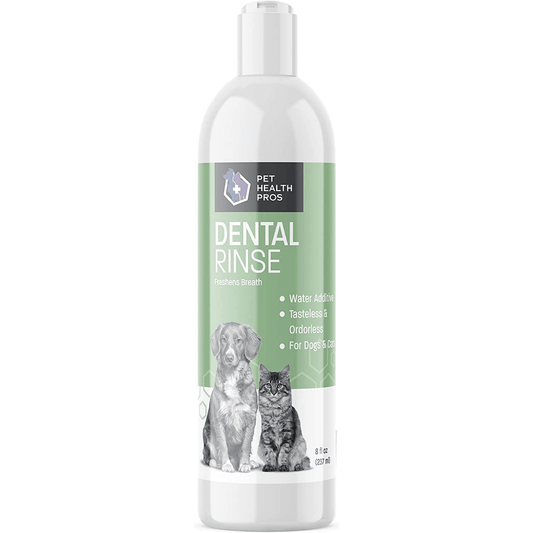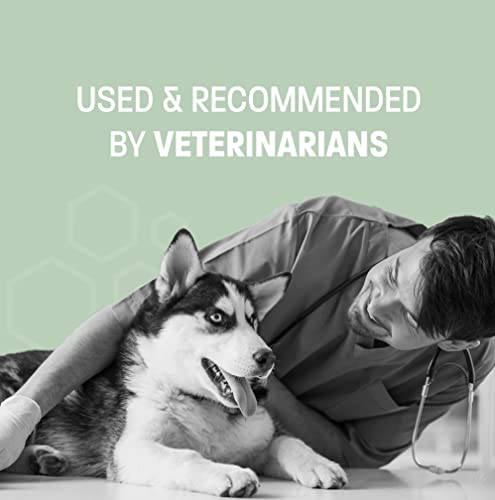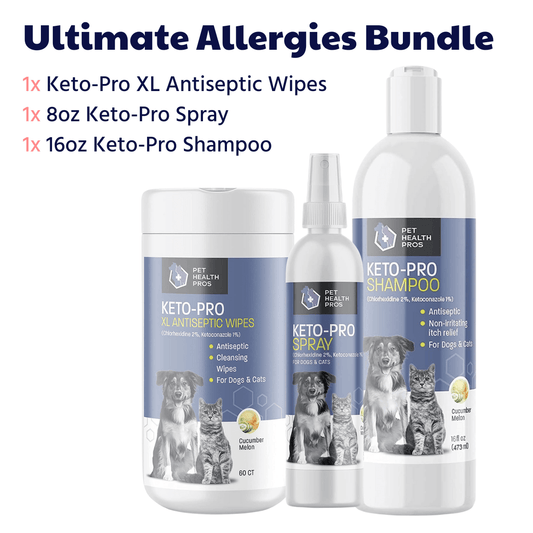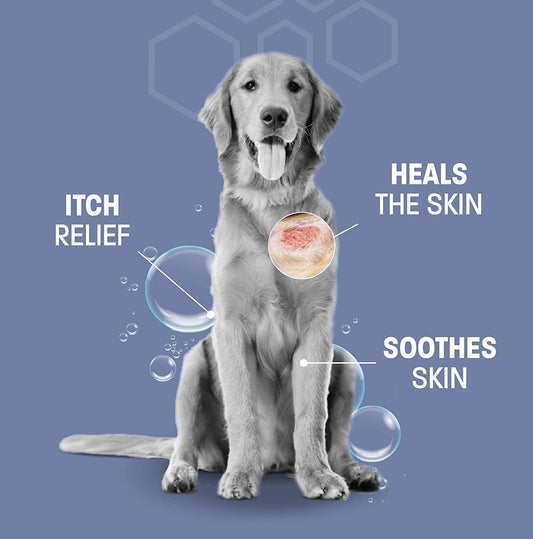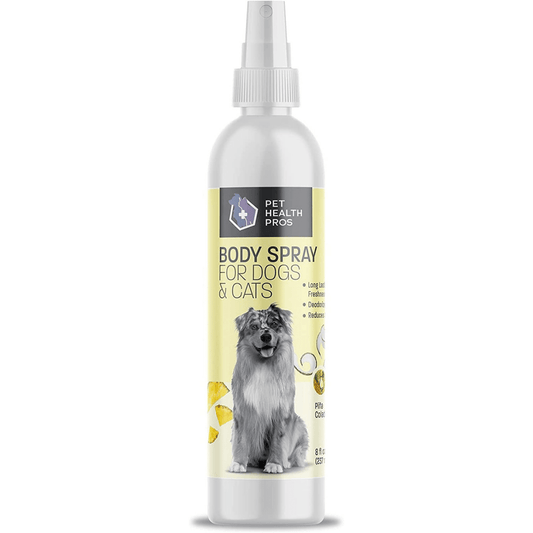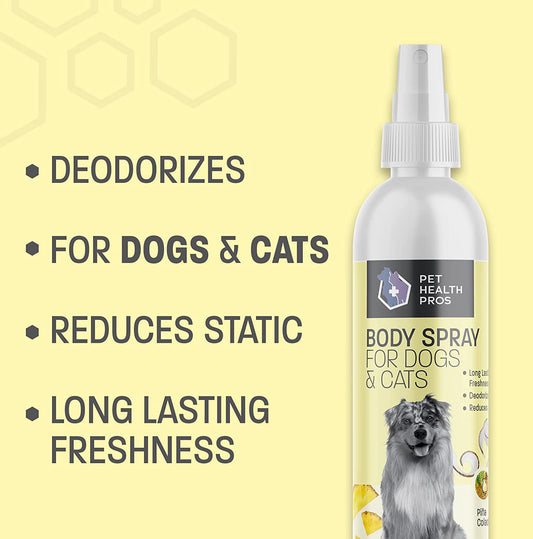Yeast infections in dog paws can be a troublesome issue for many pet owners. These infections can cause discomfort and health problems for our canine companions if not addressed properly. Understanding the symptoms, causes, and appropriate treatments is crucial for combating this condition effectively. This article explores the multifaceted approach to managing canine paw yeast infections, drawing on the expertise and commitment of Pet Health Pros, a U.S.-based company with over fifty years of experience in Veterinary Medicine and Animal Health Management.
Key Takeaways
- Early identification of yeast infections in dog paws is essential, with symptoms including itching, redness, and an unpleasant odor.
- Yeast overgrowth can be influenced by factors such as diet, environment, and the dog's overall health.
- Effective treatments range from topical medications to home remedies, emphasizing the importance of paw hygiene.
- Pet Health Pros offers expertly crafted solutions with quality ingredients to support your dog's recovery and paw health maintenance.
- Regular veterinary care and a routine that includes nutritional considerations are key to supporting your dog's overall health and preventing future infections.
Identifying Yeast Infections in Dog Paws
Recognizing the Symptoms
Yeast infections in dog paws are more common than one might expect and can cause significant discomfort for your furry friend. Recognizing the early signs is crucial for prompt treatment and relief. Symptoms often include incessant licking or chewing of the paws, redness, swelling, and a noticeable odor. Dogs may also exhibit signs of pain such as limping or reluctance to walk.
Itchiness is another hallmark symptom, leading to excessive scratching that can further irritate the skin. Here's a quick checklist of symptoms to watch for:
- Persistent licking or chewing at the paws
- Redness and swelling between the toes
- Unpleasant smell emanating from the paws
- Signs of pain like limping or avoidance of walking
- Excessive scratching due to itchiness
Early detection and treatment are key to managing yeast infections effectively. If you notice any of these symptoms, it's important to take action and consider seeking veterinary advice.
Understanding the Causes
Yeast infections in dog paws are often the result of a combination of factors that create an environment conducive to yeast overgrowth. The presence of moisture is a critical factor, as yeast thrives in warm, damp conditions. This can be exacerbated by behaviors such as excessive licking, which not only introduces moisture but can also cause irritation and break the skin barrier, making it easier for yeast to multiply.
Certain breeds with dense fur or those with compromised immune systems are more susceptible to yeast infections. Additionally, underlying health issues like allergies or hormonal imbalances can predispose dogs to these infections. Environmental factors, such as walking on contaminated surfaces or prolonged exposure to water, can also contribute to the problem.
Maintaining a clean and dry environment for your dog's paws is essential in preventing yeast infections. Regularly checking and cleaning your dog's paws can help to keep yeast at bay and ensure your pet's comfort and health.
When to Consult a Veterinarian
It's crucial to recognize when a yeast infection in your dog's paws warrants professional attention. Persistent symptoms, such as incessant licking, redness, swelling, or a foul odor, should prompt a visit to the vet. Additionally, if your dog exhibits signs of discomfort or lameness, it's time to seek expert advice.
Yeast infections can sometimes be indicative of underlying health issues, including allergies or immune system disorders. Therefore, a veterinarian's evaluation is essential to rule out these conditions and to obtain a precise diagnosis.
- Observe your dog's behavior and paw condition closely.
- Note any changes or escalation in symptoms.
- Schedule a veterinary appointment if symptoms persist or worsen.
Early intervention is key to preventing complications and ensuring a swift recovery. A veterinarian can provide a comprehensive treatment plan tailored to your dog's specific needs.
The Science Behind Canine Paw Yeast Infections
The Role of Yeast in Your Dog's Health
Yeast is a naturally occurring component of your dog's skin microbiome, playing a crucial role in maintaining skin health. In a balanced state, these microscopic fungi are harmless and even beneficial, aiding in digestion and immune function. However, when the delicate balance is disrupted, yeast can overgrow, leading to infections.
Yeast infections in dog paws are often a sign of an underlying issue, such as allergies or a compromised immune system. Recognizing the early signs of yeast overgrowth is essential for prompt treatment and preventing more serious complications.
- Itching and scratching
- Redness and inflammation
- Foul odor
- Discharge or crusty build-up
Maintaining a healthy balance of yeast is key to preventing infections and ensuring your dog's paws remain healthy.
By understanding the role of yeast and monitoring your dog's health, you can take proactive steps to manage and prevent yeast infections. Regular check-ups with a veterinarian and proper paw care are fundamental to your dog's overall well-being.
Factors Contributing to Overgrowth
Several factors can contribute to the overgrowth of yeast in a dog's paws, leading to infections. Hormonal imbalances, such as those caused by thyroid problems or adrenal gland issues, can disrupt the natural flora of the skin and create an environment conducive to yeast proliferation. Additionally, allergies—whether to food, environmental factors, or flea bites—can cause inflammation and weaken the skin's defenses.
-
Immune system disorders can also leave dogs more susceptible to yeast overgrowth. Conditions like diabetes or those that suppress the immune system can make it difficult for a dog's body to regulate yeast levels.
-
Excessive moisture trapped in the paws, often from swimming or bathing, provides an ideal breeding ground for yeast. Regular drying of paws can help prevent this issue.
Maintaining a balance between yeast and bacteria is crucial for your dog's paw health. Disruptions in this balance can lead to infections that are uncomfortable and potentially harmful if left untreated.
Proper hygiene and care are essential in preventing yeast infections. Regularly cleaning your dog's paws and monitoring for any signs of infection can help keep your pet healthy and comfortable.
The Impact of Diet and Environment
The diet and environment of your dog play a crucial role in the management of yeast infections. A balanced diet can help maintain the natural flora of your dog's skin, which includes beneficial yeast that prevents overgrowth of harmful strains. Certain foods may exacerbate yeast infections, particularly those high in sugars and carbohydrates that feed yeast growth.
Environmental factors also significantly influence the occurrence of yeast infections. Humid climates or damp living conditions can create ideal environments for yeast to thrive. Regular cleaning and maintenance of your dog's living space are essential to prevent yeast overgrowth.
It's important to note that while a diet change will not cure an existing yeast infection, it may help prevent further issues, especially in allergic dogs.
Here are some dietary and environmental considerations:
- Avoid foods with high sugar content
- Choose dog foods with limited ingredients
- Ensure your dog's living area is dry and well-ventilated
- Regularly wash and disinfect bedding and toys
Effective Treatment Strategies for Yeast Infections
Topical Treatments and Medications
When addressing yeast infections in dog paws, topical treatments and medications are often the first line of defense. Antifungal medications and medicated shampoos are commonly prescribed to alleviate symptoms and combat the infection. These treatments are designed to be applied directly to the affected area, providing targeted relief.
It's crucial to follow the veterinarian's instructions for application to ensure the best outcome for your pet.
For effective management, a routine may include cleaning the paws with a prescribed shampoo, followed by the application of a topical antifungal cream or ointment. Consistency in treatment is key to preventing recurrence and promoting healing.
- Clean the affected paws with medicated shampoo
- Dry the paws thoroughly to prevent moisture buildup
- Apply the antifungal cream or ointment as directed
- Monitor the paws for signs of improvement or any adverse reactions
Remember, while over-the-counter options are available, it's essential to consult with a veterinarian for a proper diagnosis and treatment plan tailored to your dog's specific needs.
Home Remedies and Prevention
In the fight against canine paw yeast infections, proper hygiene is paramount. Regularly cleaning your dog's paws with a gentle, pet-safe cleanser can prevent the buildup of yeast. Additionally, incorporating natural antifungals such as apple cider vinegar or coconut oil into your dog's paw care routine can help maintain a healthy balance of microorganisms.
A balanced diet is also crucial for preventing yeast infections. Foods rich in probiotics and low in sugars and carbohydrates can support a healthy immune system and inhibit yeast growth. It's important to consult with a veterinarian to tailor your dog's diet to their specific needs.
Consistent veterinary care is essential in both preventing and addressing yeast infections. Regular check-ups allow for early detection and treatment, ensuring your dog's paws remain healthy.
Remember, while home remedies can be effective, they should complement, not replace, professional veterinary advice and treatment.
The Importance of Paw Hygiene
Maintaining proper paw hygiene is crucial in preventing and treating yeast infections in dogs. Regular cleaning and inspection of your dog's paws can help identify early signs of infection and keep yeast levels in check. It's important to gently wash your dog's paws with a mild, pet-safe cleanser and thoroughly dry them, especially after walks or exposure to wet conditions.
Yeast thrives in moist environments, making it essential to keep your dog's paws dry and clean. Incorporating paw hygiene into your daily routine can significantly reduce the risk of infections. Here are some steps to ensure good paw hygiene:
- Inspect your dog's paws daily for signs of redness, swelling, or discharge.
- Clean between the toes and paw pads to remove debris and trapped moisture.
- Use a vet-recommended antifungal wash or wipes if your dog is prone to yeast infections.
- Trim the hair around the paws to prevent matting and retain less moisture.
- Ensure your dog's nails are trimmed regularly to avoid overgrowth that can harbor yeast.
While topical treatments are important, prevention through good paw hygiene can be just as effective in managing yeast infections. By keeping your dog's paws clean, you're taking a proactive step in maintaining their overall health and comfort.
Pet Health Pros' Approach to Yeast Infections
Our Expertly Crafted Solutions
At Pet Health Pros, we understand that combating canine paw yeast infections requires more than just a quick fix. Our solutions are designed with a deep understanding of yeast dermatitis and its impact on your dog's health. We offer a range of topical agents, such as medicated dog shampoos and leave-on treatments, that are easy to apply and effective in managing symptoms.
Our products are the result of over fifty years of combined experience in veterinary medicine and animal health management. They are crafted in collaboration with veterinarians and made with locally sourced, top-grade ingredients. We are a U.S.-based company that prides itself on superior, affordable pet health supplies.
Our commitment to quality and customer satisfaction is unwavering. We strive for consistent improvement of our products and services, catering to the evolving needs of pets and their owners.
With a 100% satisfaction guarantee, Pet Health Pros stands behind every product we offer. Our expertly crafted solutions are a testament to our brand promise: to enhance the lives of pets and reassure their owners.
Using Quality Ingredients for Your Pet's Health
At Pet Health Pros, we understand that the foundation of any effective treatment is the quality of its ingredients. Our products are made with locally sourced, top-grade ingredients, ensuring that your pet receives the best care possible. We collaborate closely with veterinarians to develop our formulations, guaranteeing that each product meets the high standards of pet health care.
Quality ingredients not only provide better health outcomes but also ensure safety and minimize the risk of adverse reactions. Our commitment to superior ingredients is part of our broader dedication to the well-being of pets and the peace of mind of their owners.
We stand behind our products with a 100% satisfaction guarantee, reflecting our confidence in the quality we deliver.
Our approach to using quality ingredients is straightforward:
- We prioritize ingredients that are responsibly sourced and proven effective.
- Each ingredient is carefully selected to target specific health concerns.
- We avoid unnecessary additives, focusing on what truly benefits your pet.
By choosing Pet Health Pros, you are choosing a brand that puts your pet's health first, with a promise of satisfaction that is as unwavering as our commitment to excellence.
Satisfaction Guaranteed: Our Promise to You
At Pet Health Pros, we stand firmly behind the quality and effectiveness of our products. Your satisfaction is our top priority, and we are committed to ensuring that our solutions meet the high standards that both you and your pet deserve. Our satisfaction guarantee is not just a policy; it's our pledge to you and your furry family member.
We believe in the power of our products so much that we offer a 100% satisfaction guarantee. If you're not completely happy with your purchase, we'll make it right.
Our promise extends beyond just a guarantee; it's a reflection of our dedication to excellence and the trust we've built with pet owners over the years. Here's what you can expect from us:
- Expertise-Driven Formulations
- Quality Ingredients
- Customer-Centric Services
We understand that every pet is unique, and so are their health needs. That's why we offer personalized support through our customer service and educational content. Whether it's a question about our products or advice on paw health maintenance, we're here to help every step of the way.
Supporting Your Dog's Recovery and Overall Health
Nutritional Considerations and Supplements
Proper nutrition plays a pivotal role in managing and preventing yeast infections in dog paws. A balanced diet rich in essential nutrients can bolster your dog's immune system, aiding in the fight against yeast overgrowth. Supplements such as omega-3 fatty acids, probiotics, and antioxidants can also be beneficial in maintaining healthy skin and paws.
Ensuring your dog's diet includes the right balance of vitamins and minerals is crucial for their overall health and recovery from yeast infections.
Certain foods are known to exacerbate yeast conditions, so it's important to avoid high-sugar diets and excessive carbohydrates that can feed yeast growth. Instead, focus on whole foods and consider the following supplements:
- Omega-3 fatty acids: Reduce inflammation and support skin health.
- Probiotics: Maintain a balanced gut flora and boost the immune system.
- Antioxidants: Protect cells from damage and support the body's natural defenses.
- Vitamin E: Promotes skin healing and barrier function.
Always consult with a veterinarian before making significant changes to your dog's diet or adding new supplements. They can provide tailored advice based on your dog's specific needs and health status.
The Role of Regular Veterinary Care
Regular veterinary care is crucial in managing and preventing yeast infections in your dog's paws. Veterinarians can provide professional assessments and tailor treatment plans to your pet's specific needs, ensuring a faster and more effective recovery. They can also offer valuable advice on dietary adjustments and hygiene practices that can help prevent future infections.
Consistent check-ups allow for early detection of yeast overgrowth, which is essential for stopping the infection before it becomes more severe. During these visits, vets may perform various tests to diagnose the condition accurately:
- Physical examination of the paws
- Skin scrapings for microscopic analysis
- Culture tests to identify the yeast species
It's important to follow your veterinarian's recommendations closely, as they are based on years of experience and knowledge about what's best for your dog's health.
Remember, while home remedies can be helpful, they should never replace professional veterinary care. A balanced approach that includes both medical treatment and preventive measures is key to supporting your dog's recovery and overall well-being.
Building a Routine for Paw Health Maintenance
Establishing a consistent routine for paw health maintenance is crucial for preventing yeast infections and ensuring your dog's paws remain healthy. Regular inspection and cleaning of your dog's paws can help identify early signs of infection and keep harmful bacteria at bay. Incorporate paw checks into your daily bonding activities, such as during exercise or grooming sessions.
Hygiene is a key component of paw health. After walks, gently wash your dog's paws with a mild, pet-safe cleanser and dry them thoroughly. For dogs prone to yeast infections, consider using medicated wipes or shampoos recommended by your veterinarian. Additionally, maintaining your dog's nails and hair between the pads can prevent debris accumulation and improve comfort.
Consistency is the foundation of effective paw care. By integrating paw maintenance into your dog's daily routine, you can foster a habit that supports their overall well-being.
Lastly, remember that your dog's emotional health is intertwined with their physical health. Engage in quality time, training, and communication to understand and meet their emotional needs. Offer interactive toys and activities that stimulate their mind and body, and don't forget to disinfect their living spaces regularly to maintain a clean environment.
Ensuring your beloved canine companion recovers swiftly and maintains peak health is paramount. Our comprehensive guide offers tailored advice to support your dog's journey to wellness. Don't let temporary setbacks hinder your dog's progress. Visit our website for expert tips and strategies that cater to your dog's specific needs. Take the first step towards a happier, healthier pet today!
Conclusion
In conclusion, combating canine paw yeast infections requires a vigilant approach to recognizing symptoms, understanding causes, and applying effective treatments. As pet owners, it's essential to monitor our furry friends for signs of discomfort or changes in behavior that may indicate a yeast infection. By staying informed about the potential causes, including allergies, moisture, and underlying health issues, we can take proactive steps to prevent infections. When treatment is necessary, it's important to choose the right products and follow through with the prescribed regimen. Pet Health Pros, with its commitment to expertly crafted solutions and a history of veterinary collaboration, offers a range of pet health supplies that can aid in the treatment and prevention of paw yeast infections. Remember, a healthy pet is a happy pet, and by ensuring the well-being of our canine companions, we enrich both their lives and our own.
Frequently Asked Questions
What are the common symptoms of a yeast infection in dog paws?
Common symptoms include itching, redness, swelling, a foul smell, and brownish discoloration of the paws.
What causes yeast infections in dog paws?
Yeast infections can be caused by an overgrowth of naturally occurring yeast due to moisture, allergies, hormonal imbalances, or a weakened immune system.
When should I take my dog to the vet for a paw yeast infection?
Consult a veterinarian if you notice persistent symptoms, significant discomfort, or if the infection does not improve with initial home care.
Can diet affect my dog's likelihood of developing a yeast infection?
Yes, a diet high in sugars and carbohydrates can contribute to yeast overgrowth. Feeding your dog a balanced diet can help prevent infections.
Are there any home remedies for treating canine paw yeast infections?
Home remedies may include antifungal washes, vinegar soaks, and ensuring the paws are kept clean and dry. However, always consult with a vet before trying home treatments.
What steps can I take to prevent recurring yeast infections in my dog's paws?
Preventative measures include regular paw cleaning, maintaining a healthy diet, avoiding allergens, and providing a dry, clean environment for your dog.


